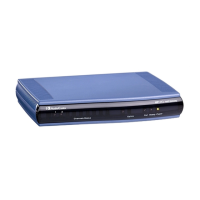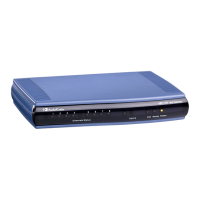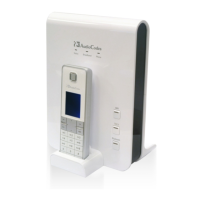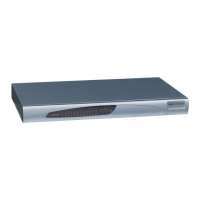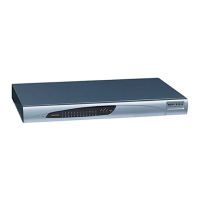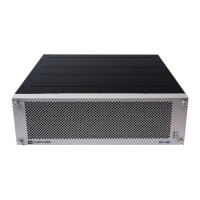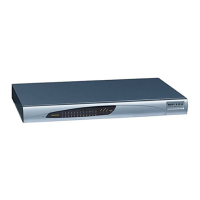CHAPTER29 Analog Gateway
Mediant 1000 Gateway & E-SBC | User's Manual
Parameter Description
[CallerDisplayInfo_
IsCidRestricted]
■ [0] Allowed = The caller ID string is sent when a Tel-to-IP call is
made.
■ [1] Restricted = The caller ID string is not sent. The Caller ID is
sent to the remote side using only the SIP P-Asserted-Identity or P-
Preferred-Identity headers, according to the AssertedIdMode
parameter.
Note: The parameter is overridden by the 'Presentation' parameter in
the Source Number Manipulation table (see Configuring
Source/Destination Number Manipulation).
Configuring Call Forward
The Call Forward table lets you configure call forwarding per analog port for IP-to-Tel calls. Call
forwarding redirects calls, using a SIP 302 response, initially destined to a specific port to a
different port on the device or to an IP destination. You can configure the reason upon which the call
is forwarded:
■ Immediate: incoming call is forwarded immediately and unconditionally.
■ Busy: incoming call is forwarded if the endpoint is busy.
■ No Reply: incoming call is forwarded if it isn't answered for a specified time.
■ On Busy or No Reply: incoming call is forwarded if the port is busy or when calls are not
answered after a specified time.
■ Do Not Disturb: immediately reject incoming calls. Upon receiving a call for a Do Not Disturb,
the SIP 603 (Decline) response code is sent.
● The feature is applicable only to FXS and FXO interfaces.
● To enable call forwarding, see Enabling Call Forwarding.
The following procedure describes how to configure call forwarding per port through the Web
interface. You can also configure it through ini file [FwdInfo] or CLI ( configure voip >
gateway analog call-forward).
➢ To configure call forwarding per port:
1. Open the Call Forward table (Setup menu > Signaling & Media tab > Gateway folder >
Analog Gateway > Call Forward).
2. Select the row corresponding to the port that you want to configure, and then click Edit; the
following dialog box appears:
- 700 -
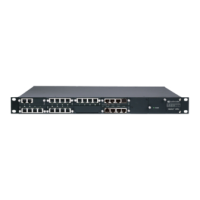
